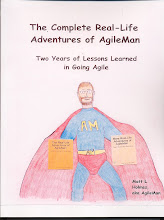As I was riding my bicycle today (in 17 degrees Celsius weather, despite there being snow on the ground... in October!), I had a thought:
What if the most important metrics around Climate Change were in everybody's face on a daily basis, like gas prices are (just to use one example that I notice most people around me talk about all the time)?
To see what I mean, consider the following hypothetical (and possibly impractical) scenario. Imagine that the current level of carbon dioxide in our atmosphere (one of the many worrisome statistics that get bandied about in most environmental discussions these days) was being measured every day, and today's value showed up wherever you went. You start up a browser... there it is, up in the corner. You turn on your TV... each network displays it, translucently, like they do their logo or call sign. You go out shopping... and it's on the ever present LED displays, along with notices of sales and special discounts. In other words, it becomes as commonly-known to the general public as the price of gas, thanks to the use of an Information Radiator model.
If that were to come true, would people be more likely to not only change their own way of living but also make more of a point to push their elected officials to make systemic changes at the municipal, state/provincial and national levels? I don't know the answer, but it struck me as interesting thought.
Subscribe to:
Post Comments (Atom)





1 comment:
No, the information would just fade into the background and get lost as a metric of badness. Quite similar to scenarios when people use green to red to identify ongoing issues. Eventually red becomes normal operating procedure, so would a constantly increasing carbon count.
Post a Comment